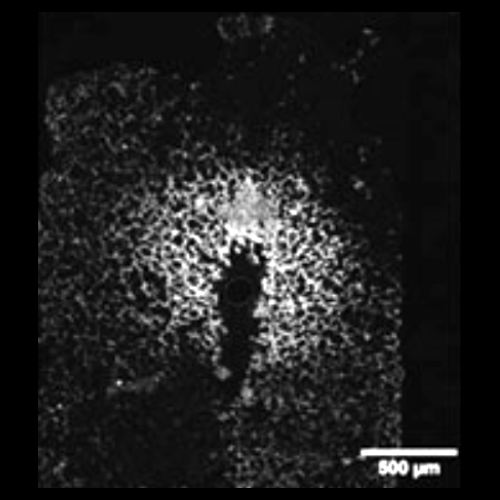Central Growth Factor Loaded Depots in Bone Tissue Engineering Scaffolds for Enhanced Cell Attraction.
Tissue engineering, the application of stem and progenitor cells in combination with an engineered extracellular matrix, is a promising strategy for bone regeneration. However, its success is limited by the lack of vascularization after implantation. The concept of in situ tissue engineering envisages the recruitment of cells necessary for tissue regeneration from the host environment foregoing ex vivo cell seeding of the scaffold. In this study, we developed a novel scaffold system for enhanced cell attraction, which is based on biomimetic mineralized collagen scaffolds equipped with a central biopolymer depot loaded with chemotactic agents. In humid milieu, as after implantation, the signaling factors are expected to slowly diffuse out of the central depot forming a gradient that stimulates directed cell migration toward the scaffold center. Heparin, hyaluronic acid, and alginate have been shown to be capable of depot formation. By using vascular endothelial growth factor (VEGF) as model factor, it was demonstrated that the release kinetics can be adjusted by varying the depot composition. While alginate and hyaluronic acid are able to reduce the initial burst and prolong the release of VEGF, the addition of heparin led to a much stronger retention that resulted in an almost linear release over 28 days. The biological activity of released VEGF was proven for all variants using an endothelial cell proliferation assay. Furthermore, migration experiments with endothelial cells revealed a relationship between the degree of VEGF retention and migration distance: cells invaded deepest in scaffolds containing a heparin-based depot indicating that the formation of a steep gradient is crucial for cell attraction. In conclusion, this novel in situ tissue engineering approach, specifically designed to recruit and accommodate endogenous cells upon implantation, appeared highly promising to stimulate cell invasion, which in turn would promote vascularization and finally new bone formation.

- Tissue Eng Part A. 2017 Aug;23(15-16):762-772
- 2017
- Biomaterials
- 28316275
- PubMed
Enabled by:
